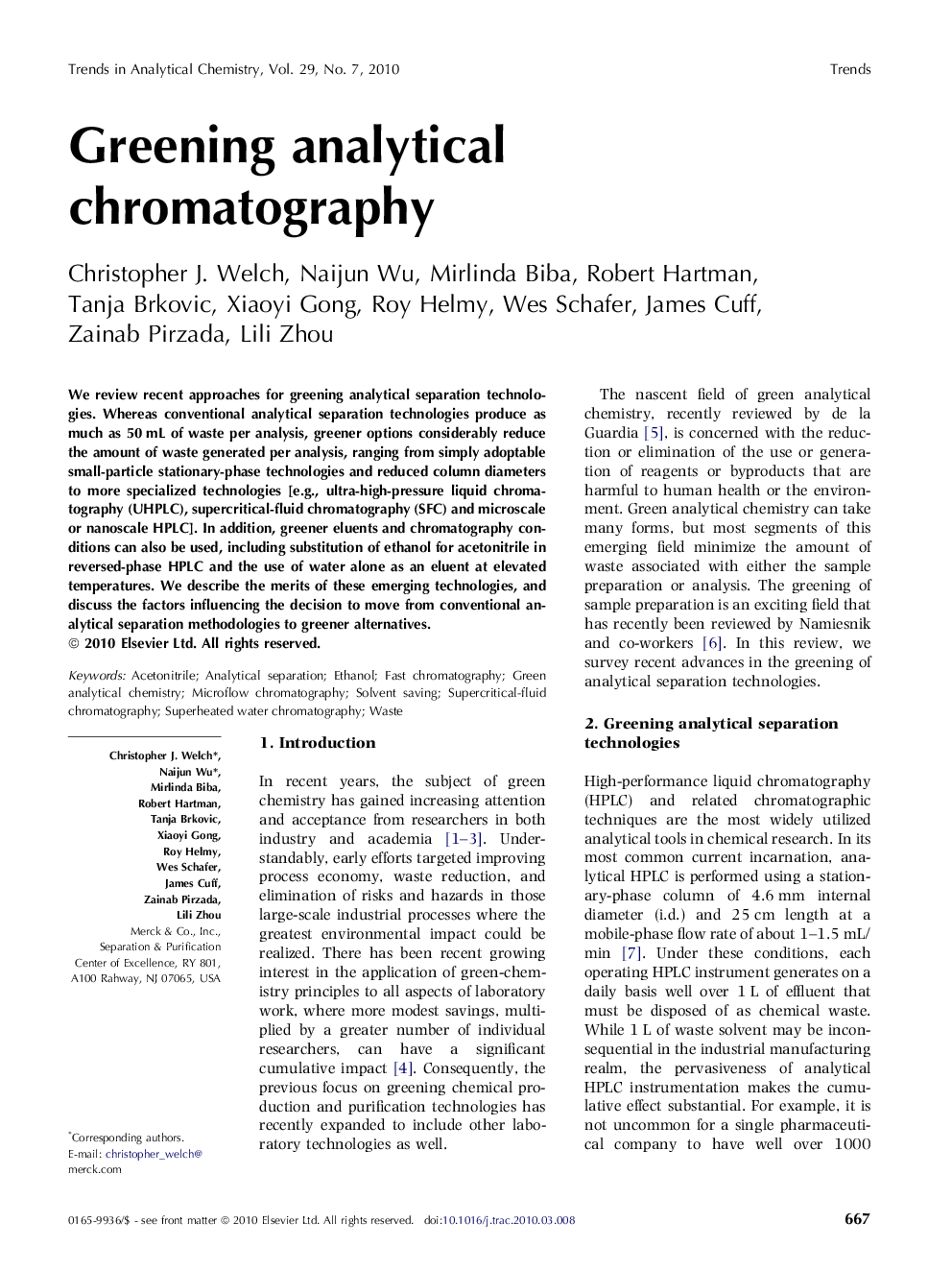| Article ID | Journal | Published Year | Pages | File Type |
|---|---|---|---|---|
| 1248546 | TrAC Trends in Analytical Chemistry | 2010 | 14 Pages |
We review recent approaches for greening analytical separation technologies. Whereas conventional analytical separation technologies produce as much as 50 mL of waste per analysis, greener options considerably reduce the amount of waste generated per analysis, ranging from simply adoptable small-particle stationary-phase technologies and reduced column diameters to more specialized technologies [e.g., ultra-high-pressure liquid chromatography (UHPLC), supercritical-fluid chromatography (SFC) and microscale or nanoscale HPLC]. In addition, greener eluents and chromatography conditions can also be used, including substitution of ethanol for acetonitrile in reversed-phase HPLC and the use of water alone as an eluent at elevated temperatures. We describe the merits of these emerging technologies, and discuss the factors influencing the decision to move from conventional analytical separation methodologies to greener alternatives.
